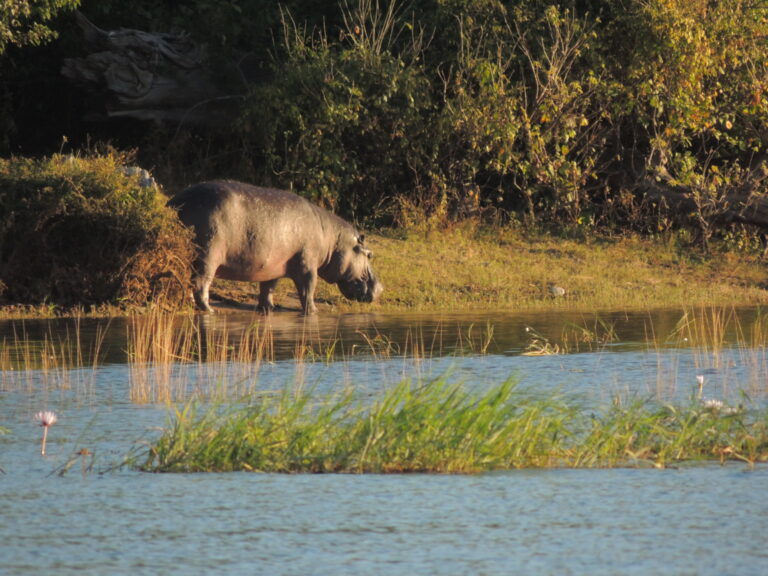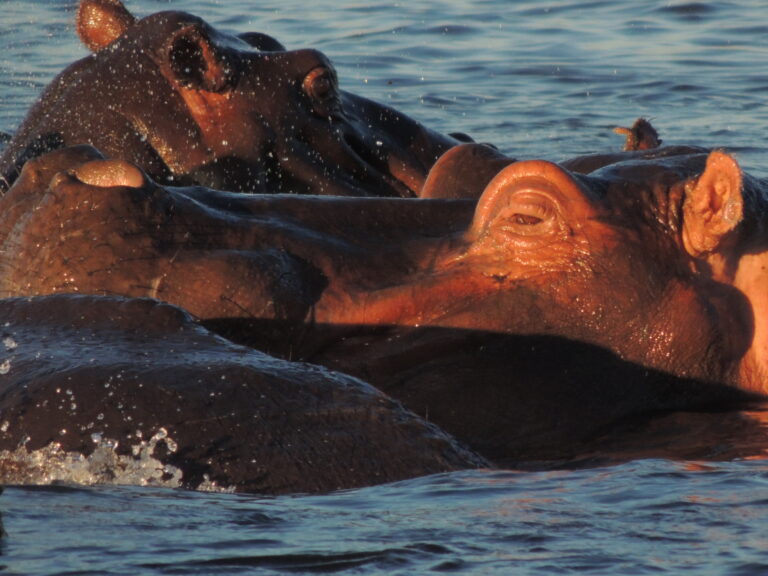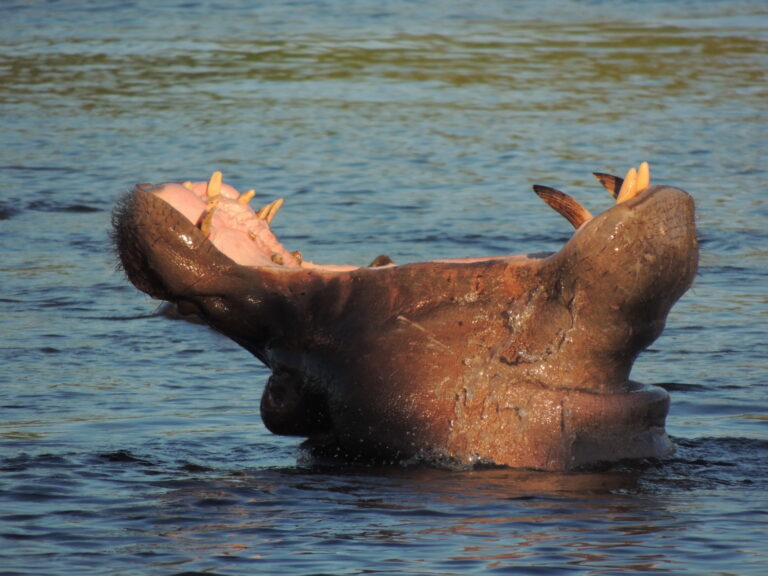The Hippo
The African hippopotamus in short hippo is an absolute gem of the African landscape! It may not top the list for largest African land mammal, but it certainly comes a close second, just behind the elephant and the white rhinoceros.
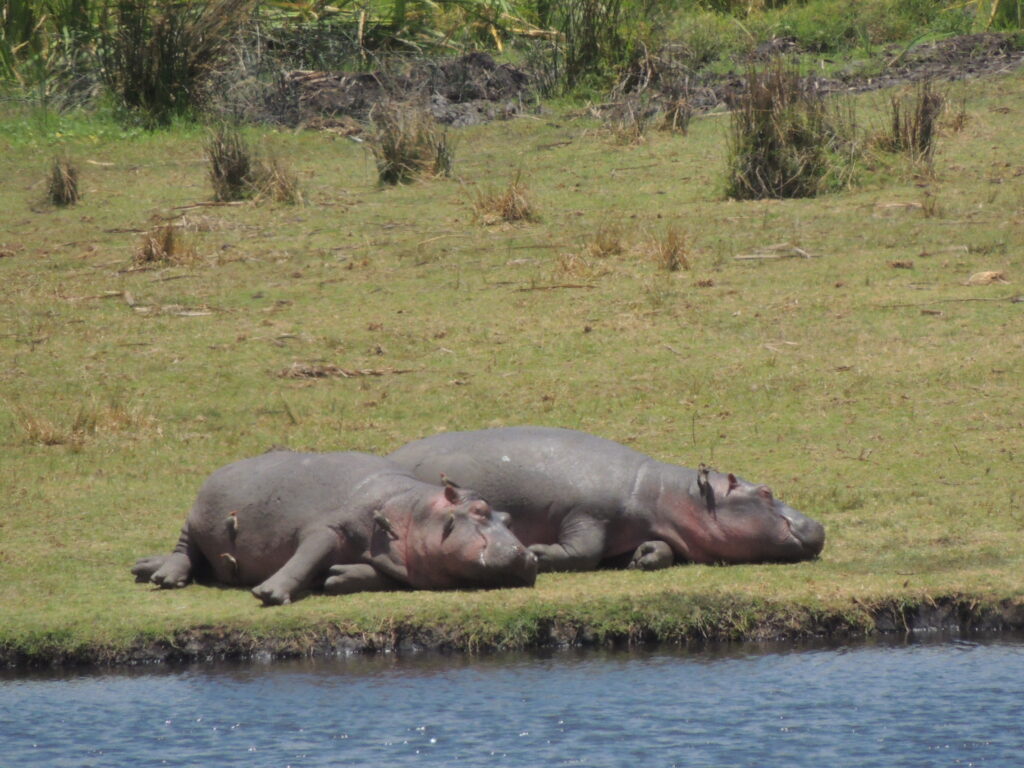
Quick Facts about African Hippos
• Latin name: Hippopotamus amphibious
• Gestation period of hippo: 8 months
• Calf size of hippo: 1 calf weighing 50 kg
• Life span of hippo: 35-45 years
• How fast hippo hippo can run: 35km/h
• Weight of male and female hippo: 2500kg and 1800kg
Hippopotamus is a Greek word meaning “River Horse” – Hippo (horse) potamus (river)
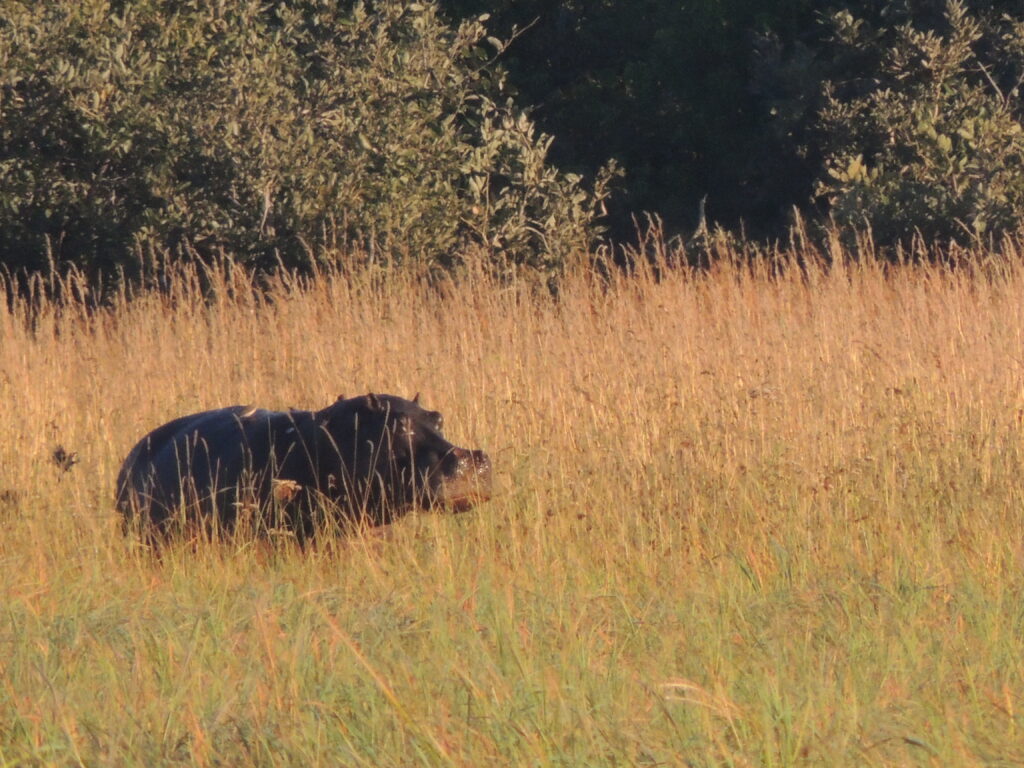
Can African Hippos Swim?
Hippos are well suited to their semi-aquatic lifestyle, but it is important to note that they cannot ‘swim’ in the full sense of the word. They rely on their huge reserves of fat to help keep them positively buoyant. They will walk along the bottom of the river or lake. When they need air, they will jump and use their buoyancy to briefly float to the surface before carrying on along the bottom.
Hippos spend much of their days in the water, resting in groups known as pods or rafts. Hippos can hold their breath for 5-6 minutes, but they cannot breathe underwater. They can sleep underwater. They lie just under the surface and come up for air automatically.
These pods rest in shallower water, keeping their heads above the surface. It is a fact that they often rest their chins on each other’s backs. If the pod is disturbed or feels threatened, it will move into the deep water where it can use the water for cover.
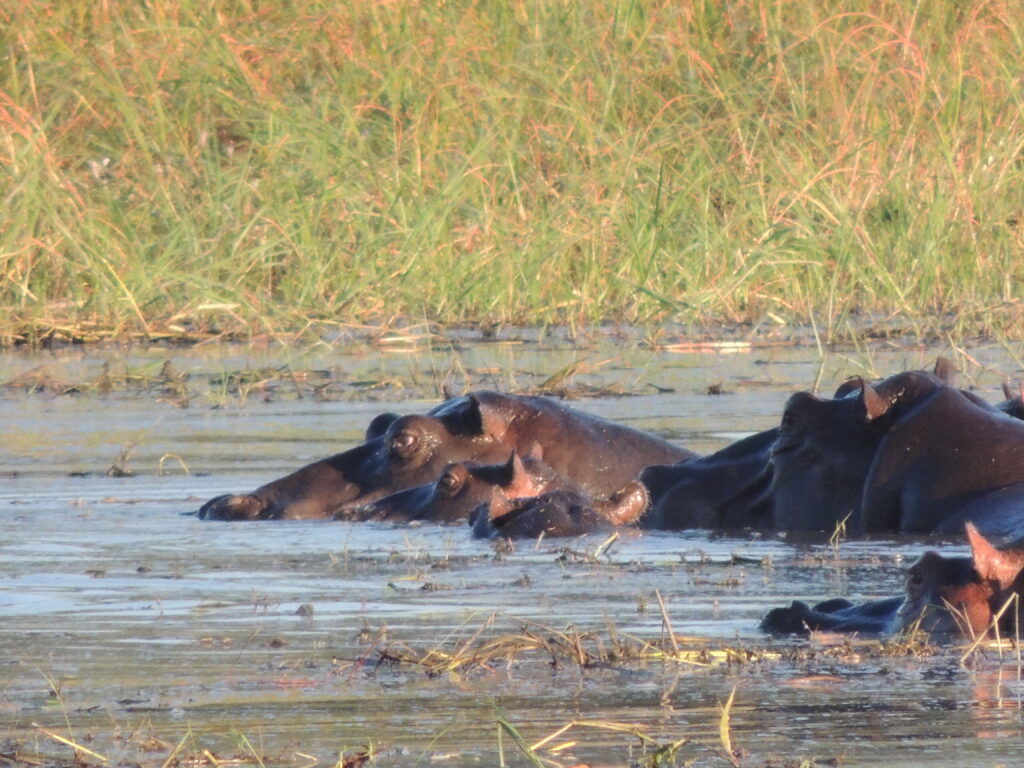
Hippopotamuses spend all day in the water for one simple reason
It is clear that they have evolved to become amphibious for several reasons. Firstly, thermoregulation: the water keeps their massive bodies cool, as they do not sweat. This saves much-needed energy that would otherwise have been used for this purpose.
Secondly, their skin has become sensitive to the sun’s ultraviolet radiation, meaning they must keep it moisturised and protected from the harsh African midday sun.
It is a fact that they will leave the protection of the water at night to graze, and they will return to the water in the early hours of the morning.
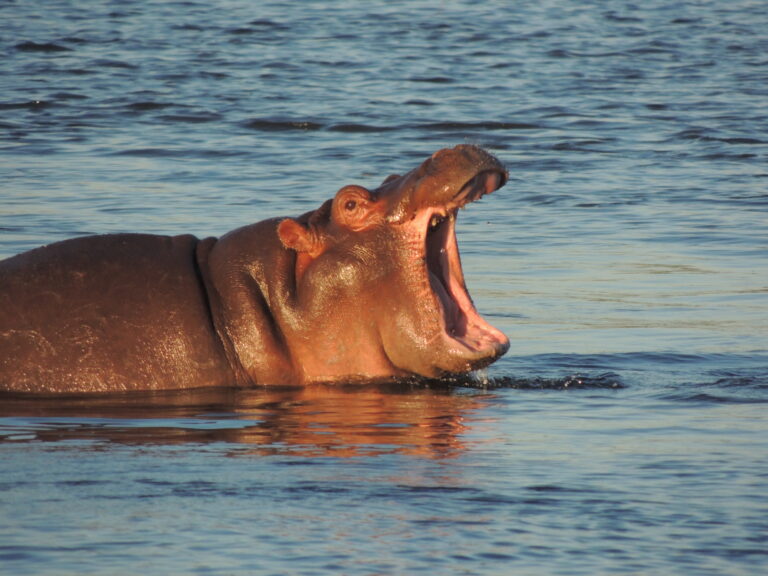
Hippos are dangerous
If a hippo is threatened out of water, it will run back to the safety of the water. Hippos are without doubt some of the most dangerous animals in Africa. If they get in the way of a hippo on its way back to water, it will be run over or bitten in half.
Their pathways to and from the water are often single-tracks through thick reeds. Any unsuspecting human using this path to fetch drinking water or wash clothing has very little chance of escape.
Hippos are also known to overturn boats and canoes. Hippo attacks on boats are almost always a result of the hippo trying to get out of the way. However, in remote areas, the occupants of these vessels are often unable to swim. This results in many deaths by drowning.
However, African Hippos do not eat fish, meat or people, despite the fact that they are responsible for so many deaths.
What does a hippo eat?
Hippos are neither herbivores nor carnivores. Hippos are bulk grazers, feeding mainly on grass but also on reeds and other aquatic vegetation. They use their square and hard lips to graze the vegetation as they have no incisors.
Because they only feed at night, they effectively have half the time to feed as other terrestrial animals. This means that they have to digest their food efficiently, extracting as many nutrients as possible from their food while reducing their energy expenditure.
Hippos have a unique digestive system that is halfway between ruminants, with their four-chamber stomachs, and the hindgut fermenters of elephants and zebras. Hippos, on the other hand, have a three-chambered stomach with an anterior digestive system. This system is slow and has a long dwell time. However, they have the whole day to process the previous night’s food.
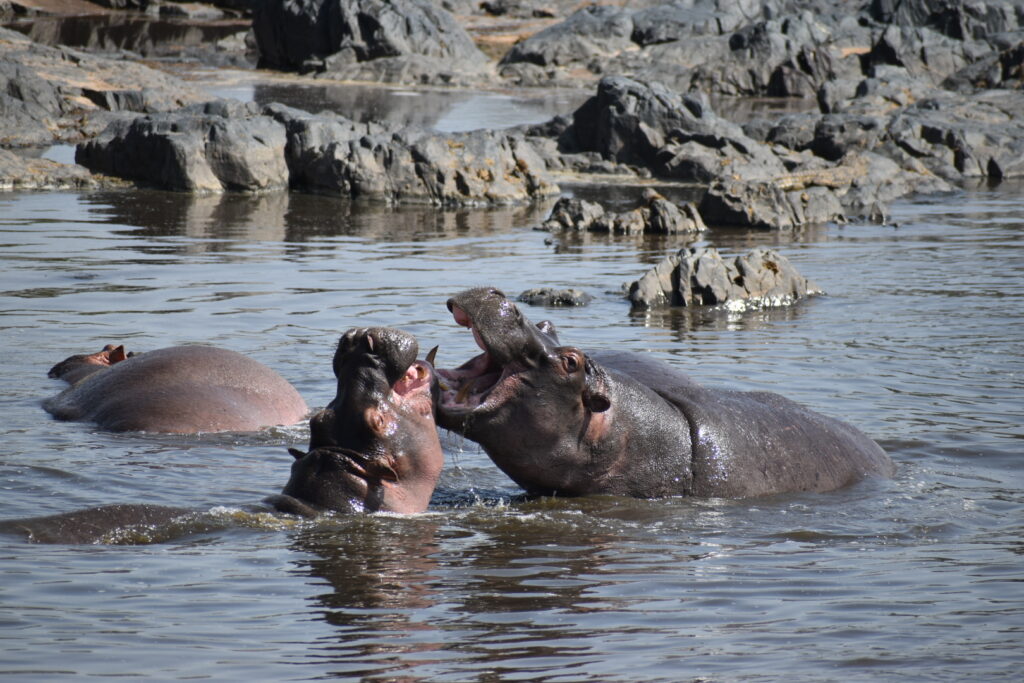
The Hippo herd
Dominant bulls will look after their pods of up to twenty females and young. Other bulls are allowed to remain within the pod as long as they are submissive to the dominant bull. When a bull challenges for dominance, the fights can often be long and brutal.
Hippos’ massive incisors and canines, up to 30cm long, can cause serious damage to the thick skin of their opponents and these fights can be fatal for the loser.
Hippos are mammals whose young are born on land, in the thick cover of reeds. Within a few hours they are led back to the safety of the pod. They can swim almost immediately and can even suckle milk from their mothers underwater. The hatchlings can often be seen resting on their mothers’ backs, and for the first few years of their lives will rarely stray far from their mothers’ protection.
What are hippos' predators?
Crocodiles are a threat to the baby hippo, but the baby cannot be touched in the safety of the pod. Other dangers include lions and hyenas when the hippos are out grazing at night. Once these hippos reach adulthood, there is little that can harm them. However, in some parts of Africa, lion prides have been known to take on these giants.
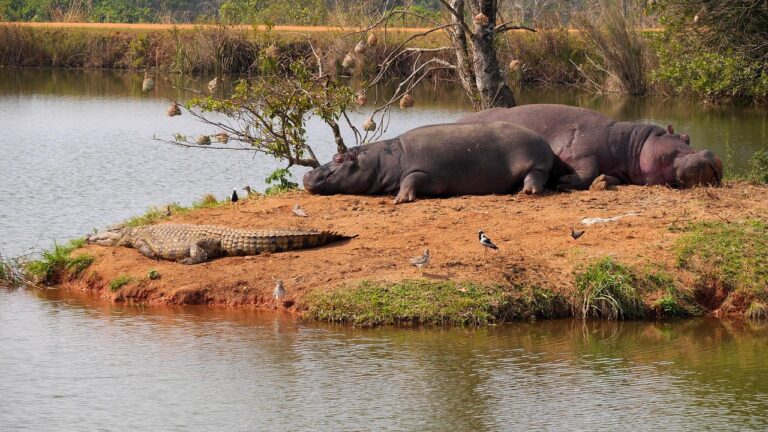
If you are thinking about a Tanzania safari please contact us to help your plan your perfect holiday. With our intimate local knowledge we can ensure that you get exactly what you are looking for.
Karibu sana!

